WSC-2025
1/357
There's no tags or description
Looks like no tags are added yet.
Name | Mastery | Learn | Test | Matching | Spaced |
|---|
No study sessions yet.
358 Terms
Rip Van Winkle
It follows a Dutch-American villager in colonial America named Rip Van Winkle who meets mysterious Dutchmen, imbibes their strong liquor and falls deeply asleep in the Catskill Mountains. He awakes 20 years later to a very changed world, having missed the American Revolution
Slice of life
a depiction of mundane experiences. In theater, slice of life refers to naturalism, while in literary parlance it is a narrative technique in which a seemingly arbitrary sequence of events in a character's life is presented, often lacking plot development, conflict, and exposition, as well as often having an open ending.
Moore's law
is the observation that the number of transistors in an integrated circuit (IC) doubles approximately every two years. It is not a law of physics but an empirical relationship based on historical trends. It is a type of experience-curve law, which quantifies efficiency improvements in production over time.
A megaproject
Is an extremely large-scale construction and investment project. They are characterized by: large investment commitment, vast complexity, and long-lasting impact on the economy, the environment, and society.
They are projects that can reach multi-billion budgets, have a high level of innovation and complexity, and are affected by several techno-socioeconomic and organizational challenges.
Big Dig
was a megaproject in Boston that rerouted the then-elevated Central Artery of Interstate 93 that cut across Boston into the O'Neill Tunnel and built the Ted Williams Tunnel to extend Interstate 90 to Logan International Airport.
Planning for the project began in 1982; the construction work was carried out between 1991 and 2006; and concluded on December 31, 2007.
The Big Dig was the most expensive highway project in the United States. Cost overruns, delays, leaks, design flaws, accusations of poor execution and use of substandard materials, criminal charges, and arrests plagued it. The project was originally scheduled to be completed in 1998 at an estimated cost of $2.8 billion ($7.4 billion in 2020). However, the project was completed in December 2007 at a cost of over $8.08 billion in 1982 ($21.5 billion in 2020).
Channel Tunnel
a 50.46 km undersea railway tunnel, opened in 1994, that connects Folkestone (England) with Coquelles (France). It is the only fixed link between the island of Great Britain and the European mainland. It has the longest underwater section of any tunnel in the world. The tunnel carries high-speed Eurostar passenger trains and LeShuttle services for road vehicles and freight trains. It connects end-to-end with high-speed railway lines.
Plans for a cross-Channel tunnel date back to 1802 but were repeatedly delayed due to security concerns. Construction finally began in 1988, led by Eurotunnel, and the tunnel opened in 1994. Initially estimated at £5.5 billion in 1985, the final cost reached £9 billion (£22.6 billion in 2023).
California High-Speed Rail (CAHSR)
a publicly funded high-speed rail system being developed in California by the California High-Speed Rail Authority.
The project was authorized by a 2008 statewide ballot to connect the state's major urban areas and reduce intercity travel times.
California legislative overseers do not expect the 2 hr 40 min target will be achieved. (like the Canada fiasco)The project has experienced significant delays and cost overruns caused by management issues, legal challenges, and a lack of a complete funding commitment.
Sejong City
a special self-governing city and the de facto (describes practices that exist in reality, regardless of the norm) administrative capital of South Korea.
Sejong was founded in 2007 as the new planned capital of South Korea from many parts of the South Chungcheong Province to ease congestion in South Korea's current capital and largest city, Seoul, and encourage investment in the country's central region. Sejong has a population of 351,007 as of 2020 making it the least-populous and smallest first-level administrative division in South Korea. The construction of the city is expected to be completed in 2030, at which time 500,000 people are expected to live there.
Hambantota
the main city in Hambantota District, Sri Lanka (an island). It's undergoing some major development projects including the construction of a new sea port and international airport that finished in 2013. These projects and others such as Hambantota Cricket Stadium are said to form part of the government's plan to transform Hambantota into the second major urban hub of Sri Lanka, away from Colombo (the biggest city in Sri Lanka).
NEOM
is an arcology and planned city being built by Saudi Arabia. Launched in 2017 by the crown prince, the site is at the northern tip of the Red Sea, due east of Egypt across the Gulf of Aqaba and south of Jordan. The total planned area of Neom is 26,500 km2. Multiple regions are planned, including a floating industrial complex, a global trade hub, tourist resorts, and a linear city powered by renewable energy sources.
Much of the city is hoped to be completed by 2039, though some experts have expressed skepticism about the ambitions of the megaproject. The project's estimated costs exceed $1.5 trillion.
Neom's construction has also been criticized for environmental and human rights violations, with expatriate employees describing abusive working conditions and members of the local Howeitat tribe protesting against their forced expulsion. Around 20,000 people are expected to be forcibly relocated.
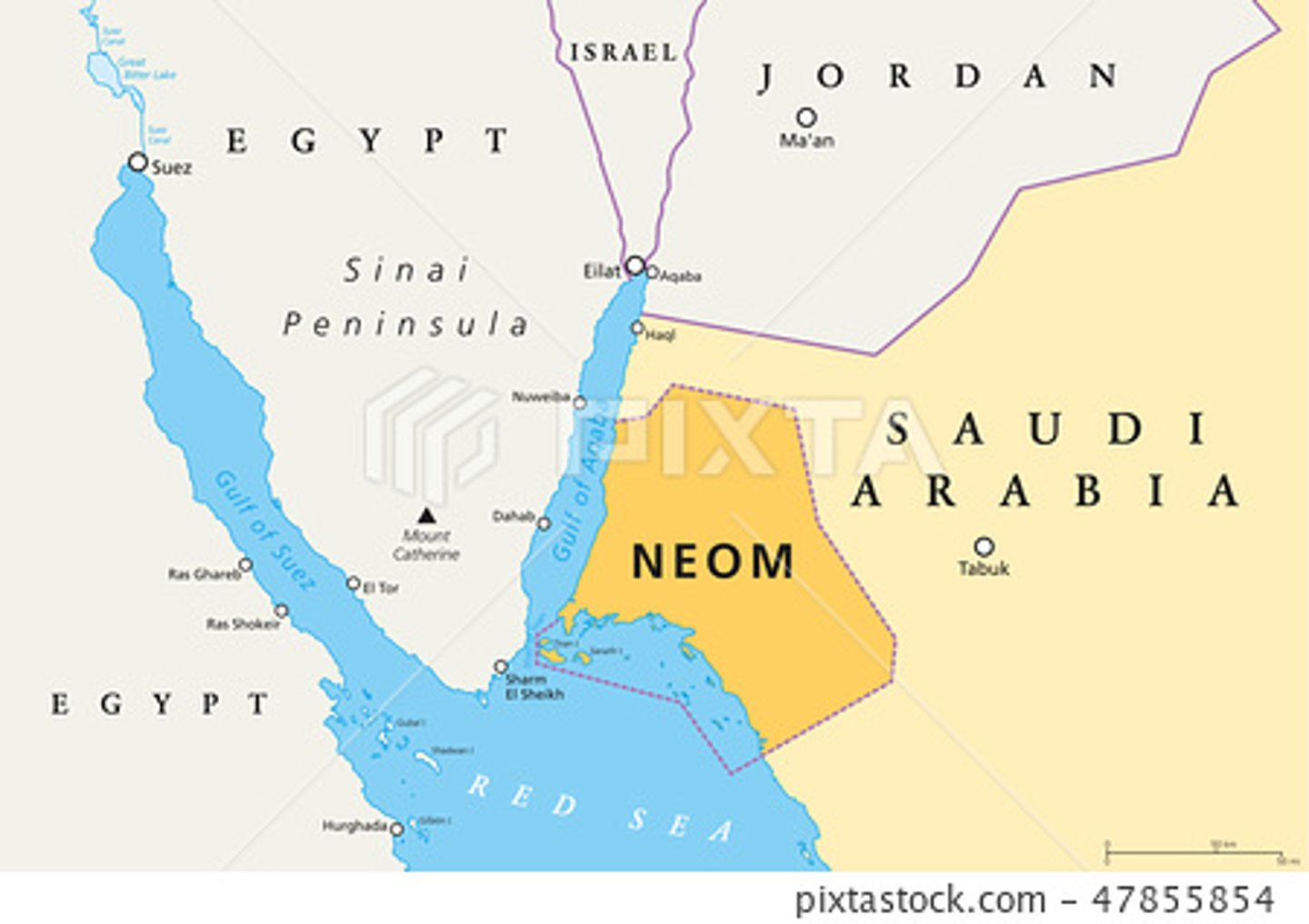
Khazar Islands
is a stalled development of artificial islands 25 km south of Baku, Azerbaijan consisting of 41 islands extending 30 km2 into the Caspian Sea
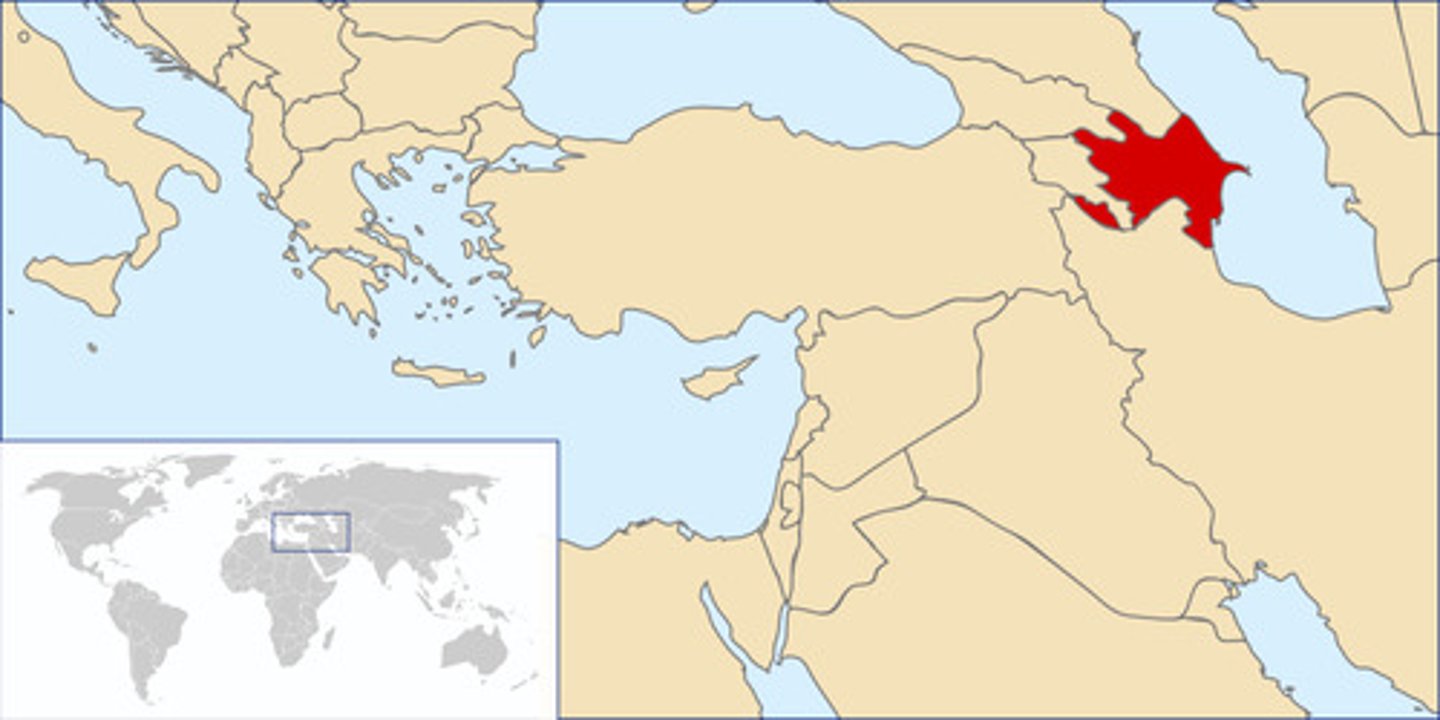
Three Gorges Dam
is a hydroelectric gravity dam that spans the Yangtze River near Sandouping in central China, downstream of the Three Gorges. The world's largest power station by installed capacity (22,500 MW).
The dam's body was completed in 2006; the power plant became fully operational in 2012.
The dam increases the Yangtze River's shipping capacity and reduces the likelihood of flooding downstream. As a result, the Chinese government regards the project as a monumental social and economic success.
The dam's construction displaced more than 31 million people and inundated ancient and culturally significant sites. In operation, the dam has caused some ecological changes, including an increased risk of landslides.
Hong Kong-Zhuhai-Macau Bridge (HZMB)
is a 55-kilometer bridge-tunnel system consisting of a series of three cable-stayed bridges, an undersea tunnel, and four artificial islands. It is the longest sea crossing in the world. The HZMB spans the Lingding and Jiuzhou channels, connecting Hong Kong and Macau with Zhuhai—a major city on the Pearl River Delta in China.
The bridge was designed to last for 120 years and cost $18.8 billion to build.
New Eurasian Land Bridge
is the southern counterpart to the Eurasian Land Bridge and runs through China and Central Asia with possible plans for expansion into South and West Asia. The Eurasian Land-Bridge system is important as an overland rail link between China and Europe.
PARO (robot)
is a therapeutic baby seal robot, intended to be very cute and to have a calming effect on and elicit emotional responses in patients of hospitals and nursing homes, similar to animal-assisted therapy except using robots.
Pepper(robot)
is a semi-humanoid robot, designed with the ability to read emotions.
Robear
Japan is a pioneer in care automation. It's a prototype lifting robot.
Hug (robot)
designed to assist care workers in lifting people, a demanding physical job.
A stimulus
is a change in a living thing's internal or external environment. This change can be detected by an organism or organ using sensitivity and leads to a physiological reaction.
The Goldilocks principle
just as Goldilocks in the fairytale Goldilocks and the Three Bears finds that moderation (in porridge (not too hot, not too cold), and beds (not too hard, not too soft)) is "just right", in this context: so too would it seem to be for screen time.
Doomscrolling
the act of spending an excessive amount of time reading large quantities of news, particularly negative news, on the web and social media. Doomscrolling can also be defined as the excessive consumption of short-form videos or social media content for an excessive period of time without stopping.
Section 230
protects online platforms from being held legally responsible for user-generated content. This means that websites like Facebook, Twitter, and YouTube cannot be sued for harmful or false posts made by their users. Instead, only the person who created the content is responsible. Additionally, it allows platforms to moderate content—removing harmful or inappropriate posts—without being sued for censorship, as long as they act in "good faith."
fear speech
pressures neutral parties to align with extremist ideologies.
Headline anxiety disorder
a term used to describe the stress and anxiety that can result from constant exposure to news headlines, especially those that are negative or alarming. While it's not a formally recognized medical condition, many people experience symptoms of worry or dread when they read the news.
Clickbait
a text or a thumbnail link that is designed to attract attention and to entice users to follow ("click") that link and view, read, stream or listen to the linked piece of online content, being typically deceptive, sensationalized, or otherwise misleading. A "teaser" aims to exploit the "curiosity gap", providing just enough information to make readers of news websites curious, but not enough to satisfy their curiosity without clicking through to the linked content.
Clickbait headlines
like normal clickbait but it often adds an element of dishonesty, using enticements that do not accurately reflect the content being delivered.
The Boston Marathon bombing
was an Islamist domestic terrorist attack that took place during the 117th annual Boston Marathon on April 15, 2013. Brothers Tamerlan and Dzhokhar Tsarnaev planted two homemade pressure cooker bombs that detonated near the finish line of the race 14 seconds and 190 m apart. Three people were killed and hundreds injured, including a dozen who lost limbs.
The negativity bias
is a cognitive bias that, even when positive or neutral things of equal intensity occur, things of a more negative nature (e.g. unpleasant thoughts, emotions, or social interactions; harmful/traumatic events) have a greater effect on one's psychological state and processes than neutral or positive things.
traumatic media
a really upsetting video. It could be from a war, a crime scene, or a disaster.
Michel de Nostredame
(December 1503 - July 1566), was a French astrologer, apothecary, and physician, who is best known for his book Les Prophéties (published in 1555), a collection of 942 poetic quatrains (4 line poems) allegedly predicting future events. Academic sources reject the notion that Nostradamus had any genuine supernatural prophetic abilities and maintain that the associations made between world events and Nostradamus's quatrains are the result of (sometimes deliberate) misinterpretations or mistranslations.
Nostradamus's predictions are characteristically vague, meaning they could be applied to virtually anything, and are useless for determining whether their author had any real prophetic powers.
Horace-Ode I. 11 (23 BCE):
is a famous poem that embodies the philosophy of carpe diem, or "seize the day." Addressing Leuconoe, the speaker urges against trying to predict the future through divination, emphasizing that fate is unknowable. He acknowledges the uncertainty of life, warning that this winter may be their last or one of many more, but either way, time continues to pass. Instead of dwelling on the future, he advises embracing wisdom, taking action in the present, and letting go of unrealistic hopes. The poem highlights the fleeting nature of time and encourages living fully in the present, as the future is beyond human control.
William Butler Yeats-The Second Coming (1919):
a powerful and apocalyptic poem reflecting on chaos, decline, and the arrival of a new, ominous era. The opening lines describe a world spiraling out of control, where order has collapsed and anarchy reigns. Yeats uses the image of a falcon losing connection with its falconer to symbolize humanity's disconnection from guiding principles.
stability is lost, and society is unraveling. The second stanza introduces a mysterious, terrifying vision inspired by Spiritus Mundi—the collective human spirit. A monstrous, sphinx-like creature emerges in the desert, signaling the arrival of a new, possibly malevolent age. The poem ends with the haunting question of what this "rough beast" is, as it moves toward Bethlehem, evoking the idea of a dark, foreboding rebirth. Yeats, writing after World War I, expresses a sense of dread about the future, suggesting that the world is on the brink of an irreversible transformation.
Robert Frost-Fire and Ice (1920):
is a brief yet profound poem that explores the potential ways the world could end, using fire and ice as symbols for human emotions. Fire represents desire, passion, and unchecked ambition, while ice symbolizes hatred, indifference, and emotional coldness. The speaker aligns with those who believe fire will bring destruction, associating it with the intensity of desire. However, he acknowledges that ice—like hate—is just as capable of causing devastation, implying that both passion and cold cruelty have the power to destroy. Through its simple structure and concise language, the poem delivers a powerful message about the destructive nature of human emotions, suggesting that both uncontrolled desire and deep-seated hatred could lead to the world's downfall.
Emily Dickinson-The Future—never spoke (1921):
reflects on the mysterious and inevitable nature of the future. The poem portrays the future as silent and unknowable, refusing to give any signs or clues about what is to come. Instead of offering warnings or allowing preparation, the future reveals itself only when events unfold, leaving no room for avoidance or alteration. The speaker emphasizes that the future is indifferent—it does not favor or spare anyone, acting solely as the executor of fate's message. Through her characteristic use of dashes and concise language, Dickinson captures the inescapable and impartial force of time, reinforcing the idea that the future arrives on its own terms, beyond human control.
divination
a way of trying to get information that you can't get through normal means, like seeing the future or understanding the past. It's like trying to solve a mystery, but instead of looking for clues, people who practice divination believe they can communicate with the supernatural.
The Shang dynasty
existed in China from 1600 to 1050 BCE, is considered the first historical dynasty of China because it left behind written records.
Comparative horoscopy
is a technique used by astrologers to assess the compatibility and potential dynamics of a relationship by comparing the birth charts of two individuals.
Haruspicy
involves inspecting the entrails of sacrificed animals, especially the liver, to determine the will of the gods.
It was performed by specially trained priests called haruspices. The haruspices would examine the entrails of the sacrificed animal and look for any unusual signs or markings. They would then interpret these signs to determine the will of the gods.
Haruspicy was used to make important decisions about the state, such as whether to go to war or make peace. It was believed that the gods could communicate their will through the entrails of sacrificed animals, and the haruspices were responsible for interpreting these messages.
Ornithomancy
is the practice of reading omens from the actions of birds. is divination by birds
Alectryomancy
is a type of fortune-telling that involves watching a rooster peck at grain. The diviner would scatter grain on the ground, sometimes in the shape of letters, and then observe which grains the rooster pecked at. By interpreting the rooster's pecking, the diviner would try to gain insights or answers to questions.
Pyro-osteomancy
a type of divination that involves using fire and bones. The bones are heated in a fire, and the cracks and patterns that form on the bones are interpreted to answer questions about the future.
Oneiromancy
is a form of divination based upon dreams, (uses dreams to predict the future). Oneirogen plants may also be used to produce or enhance dream-like states of consciousness.
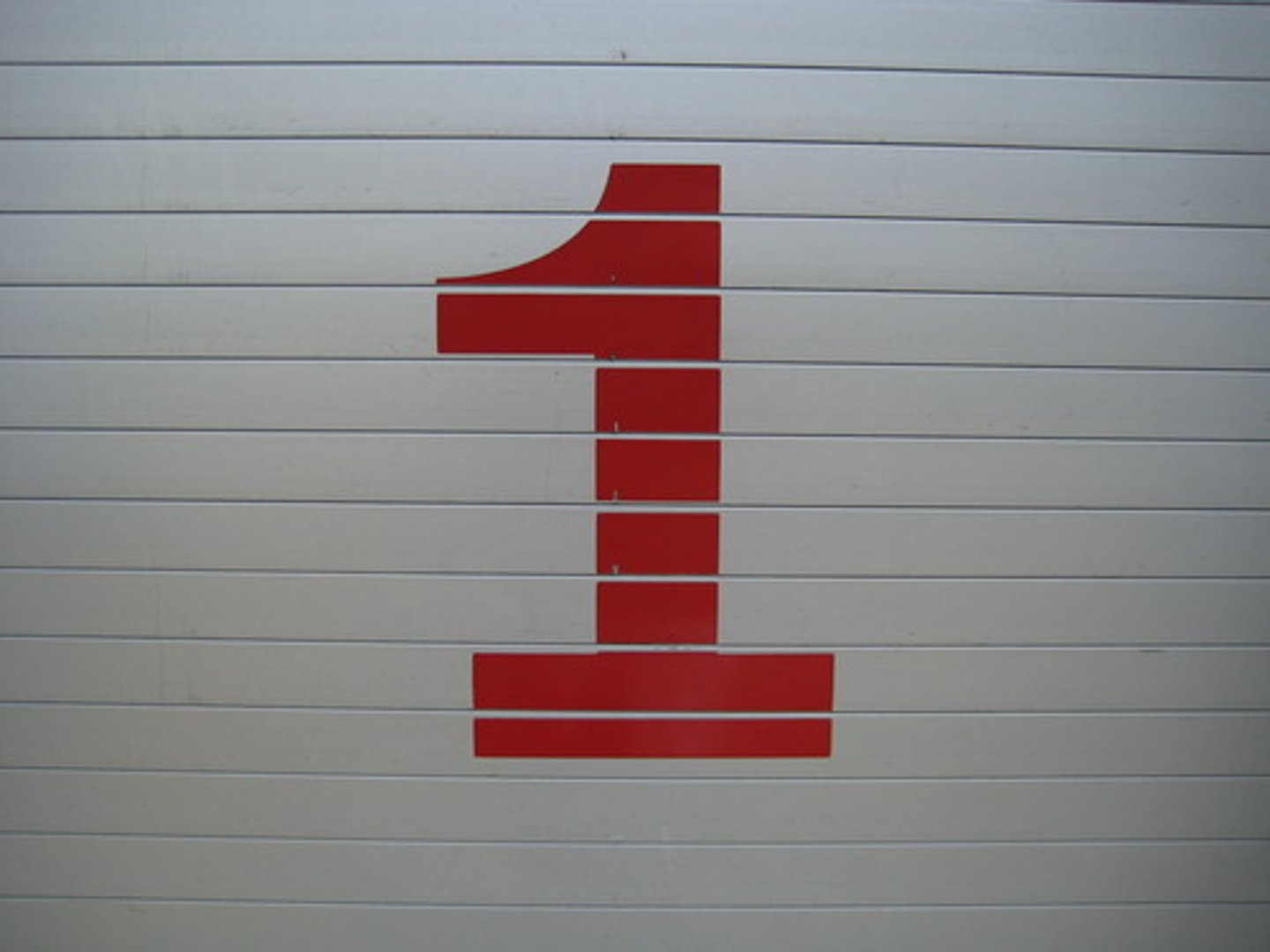
Bibliomancy
the use of books in divination. The use of sacred books (especially specific words and verses) for "magical medicine", for removing negative entities, or for divination is widespread in many religions of the world.
Hydromancy
a method of divination by means of water, including the color, flow, or ripples produced by pebbles dropped in a pool. It also refers to the entering of a trance by staring at a chosen form of water, which is a form of scrying.
Astragalomancy
a form of divination that uses dice specially marked with letters or numbers.
Historically, the "dice" were usually knucklebones or other small bones of quadrupeds. In astragalomancy, numbers are scrawled into the dice; the numbers are associated with letters, thus bearing on the questions of the diviner. The diviner then casts the dice, resulting in a random sequence of numbers. The diviner interprets this sequence according to certain rules - usually rules related to a religion.
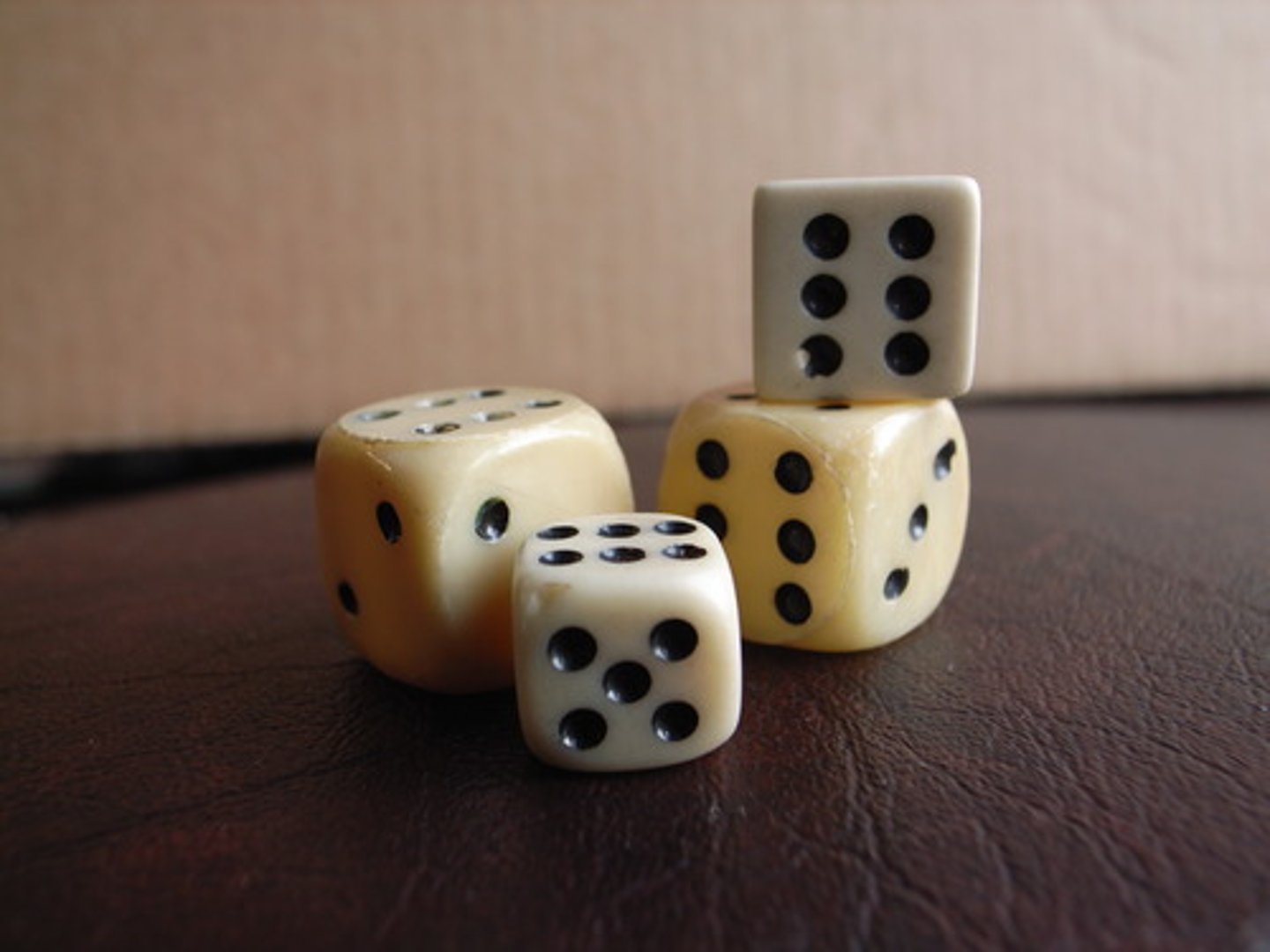
Scyphomancy
is divination using a cup or goblet. This may involve forecasting or representing by using a cup of water and reading the signs specified by certain articles floating on the water.
Astrology
is a range of divinatory practices that propose that information about human affairs and terrestrial events may be discerned by studying the apparent positions of celestial objects. Most, if not all, cultures have attached importance to what they observe in the sky.
Contemporary Western astrology is often associated with systems of horoscopes.
Palmistry
(palm reading) is a practice of fortune-telling through the study of the palm. There are many—and often conflicting—interpretations of various lines and palmar features across various teachings of palmistry.
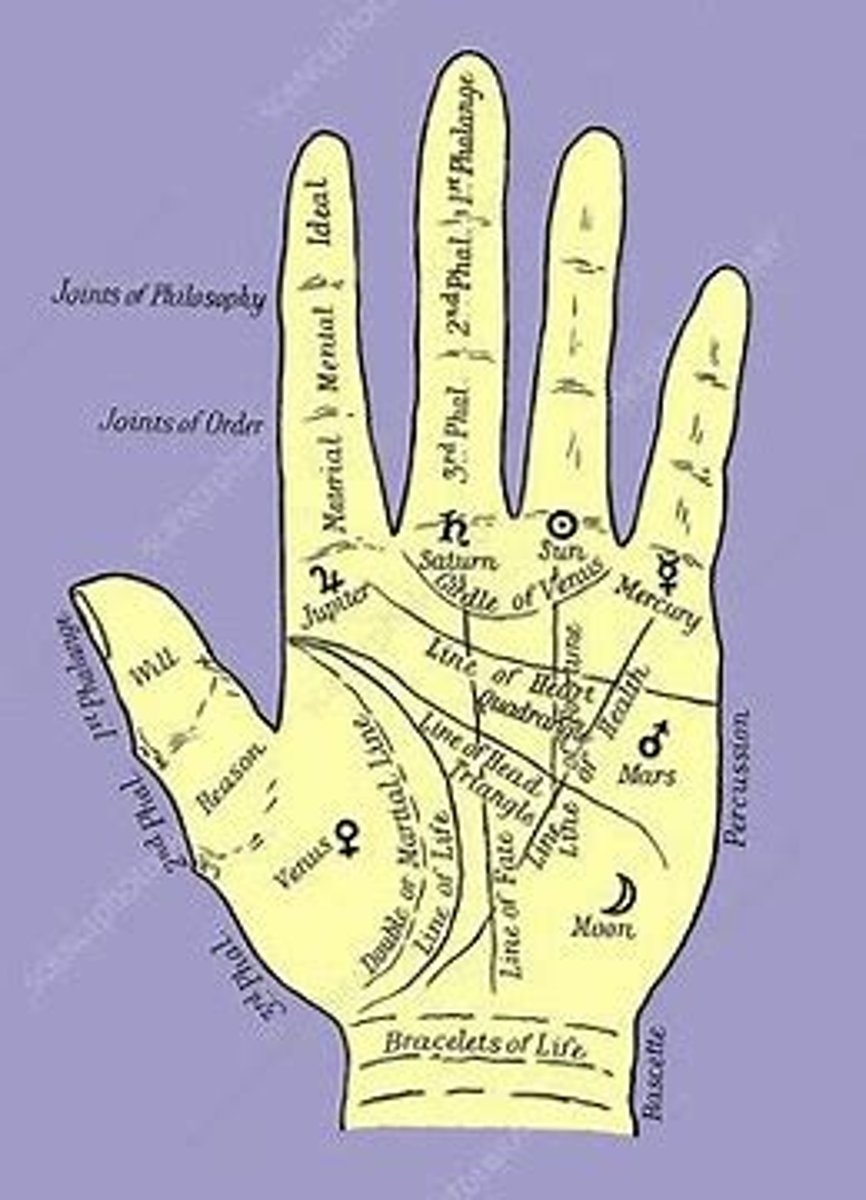
Physiognomy
(or face reading) is the practice of assessing a person's character or personality from their outer appearance—especially the face.
it's a subject of renewed scientific interest, especially as it relates to machine learning and facial recognition technology.
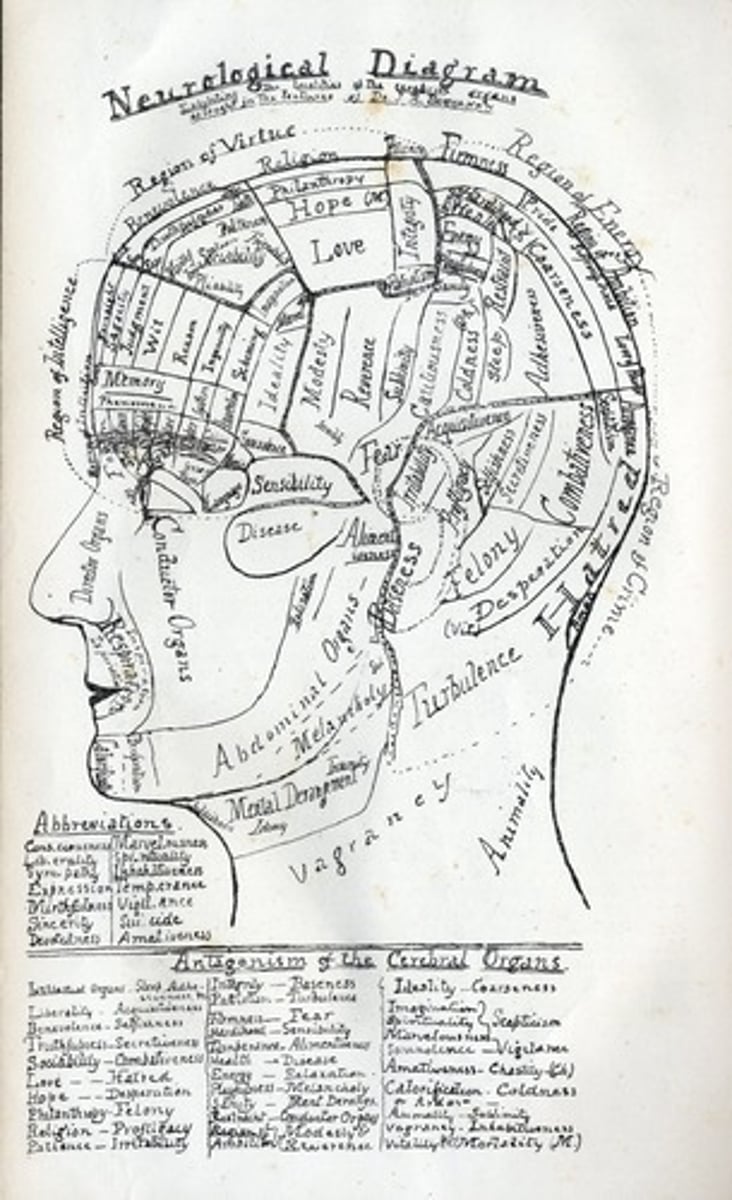
Carromancy
a form of divination involving wax. U heat wax until molten, then pour it directly into cold water. The shapes and movements of the wax as it cools and solidifies can then allegedly be read to forecast auguries of the future.
Tasseography
a divination or fortune-telling method that interprets patterns in tea leaves, coffee grounds, or wine sediments.
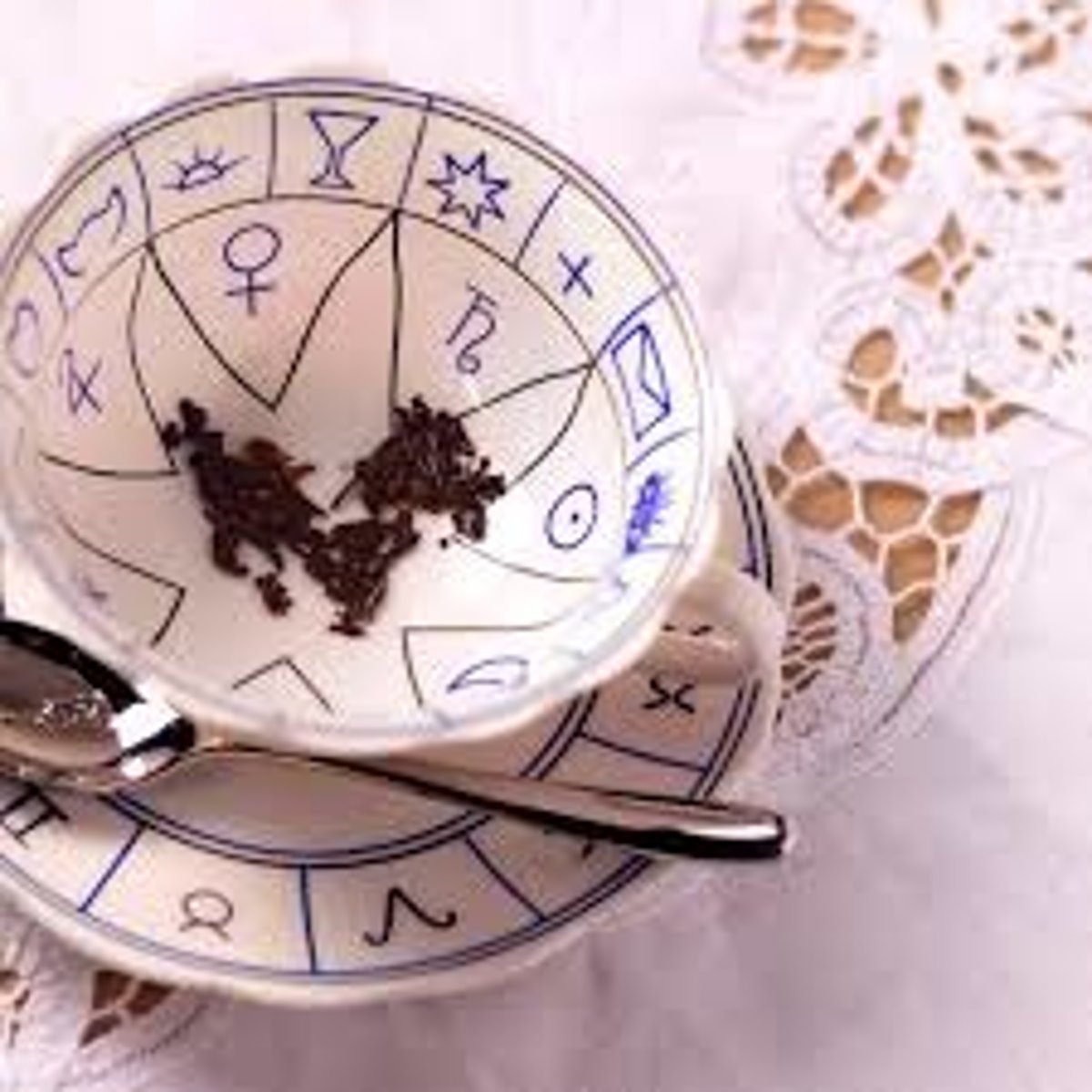
Cartomancy
is fortune-telling or divination using a deck of cards. The standard 52-card deck is often augmented with jokers or even with the blank card found in many packaged decks. In English-speaking countries, the most common form of cartomancy is generally tarot card reading.
Fortune telling
is a spiritual practice of predicting information about a person's life. The scope of fortune telling is in principle identical with the practice of divination though fortune telling implies a less serious or formal setting.
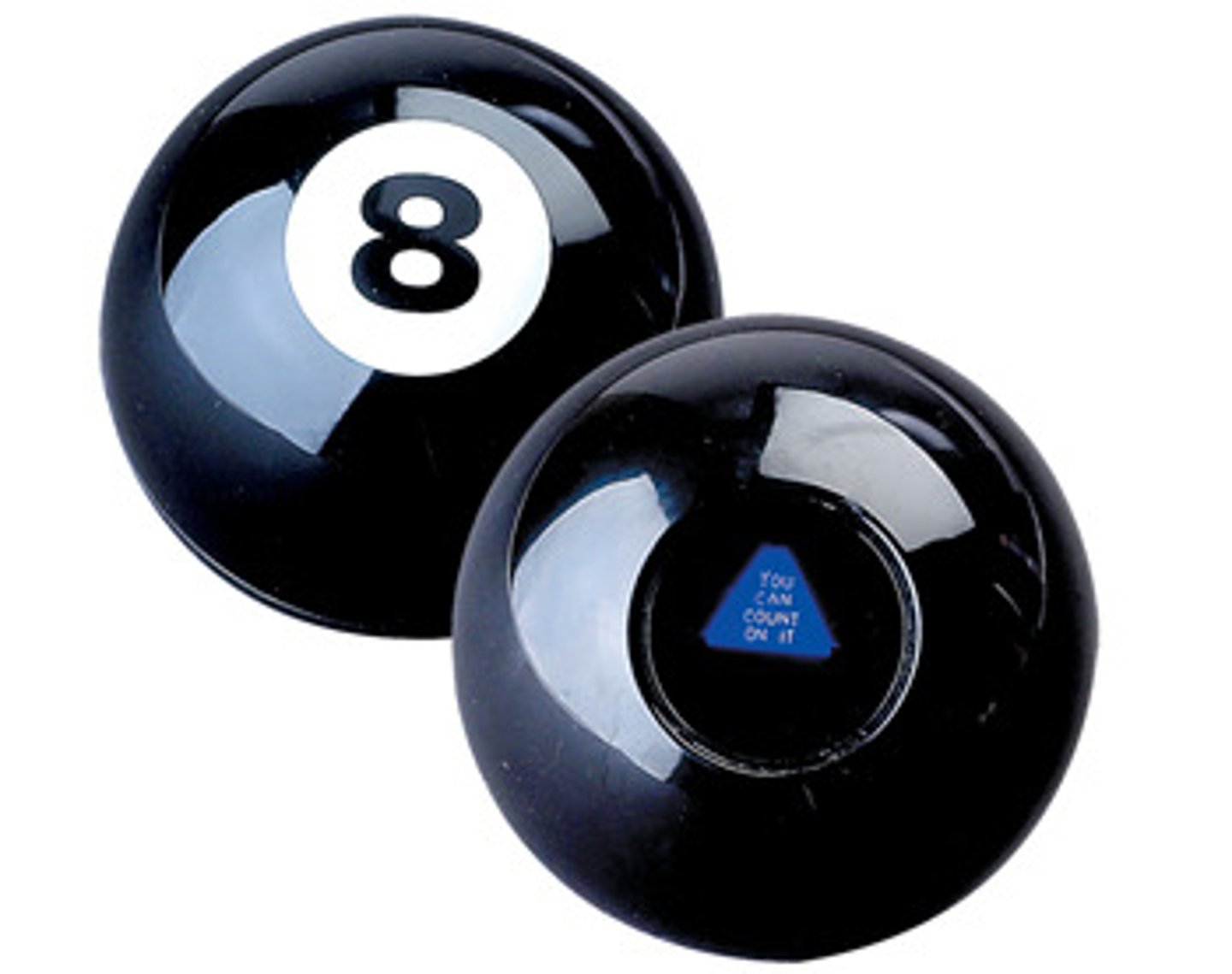
An oracle
a person or thing considered to provide insight, wise counsel, or prophetic predictions, most notably including precognition of the future, inspired by deities.
Oracles were thought to be portals through which the gods spoke directly to people. In this sense, they were different from seers who interpreted signs sent by the gods through bird signs, animal entrails, and other methods.
A soothsayer
a person who is believed to be able to see into the future. They are also known as fortune tellers, prophets, or seers. Some soothsayers use tools such as tarot cards, crystal balls, or astrology. Others claim to have psychic abilities or to be able to communicate with spirits.
Shamanism
is a spiritual practice that involves a practitioner (shaman) interacting with the spirit world through altered states of consciousness, such as trance. The goal of this is usually to direct spirits or spiritual energies into the physical world for the purpose of healing, divination, or to aid human beings in some other way.
Witch
is a term rooted in European folklore and superstition for a practitioner of witchcraft, magic or sorcery. Traditionally associated with malevolent (evil doing to people) magic, with those accused of witchcraft being the target of witch-hunts.
Clairvoyance
is the claimed ability to acquire information that would be considered impossible to get through scientifically proven sensations, thus classified as extrasensory perception, or "sixth sense".
Ifá
is a divination system and a religious text in the Yoruba religion that originates in Yorubaland in West Africa, particularly in present-day Nigeria.
Initially, Ifá was an integral part of Yoruba oral literature, passed down through generations via word of mouth. However, over time, the oral tradition of Odu Ifá evolved into a sacred text, incorporating elements of religion and spirituality. The Odu Ifá corpus consists of 256 sacred poems, each associated with a specific set of symbols, known as Ikin Ifá. These symbols are used to divine the future, understand the present, and interpret the past. Ifá priests and practitioners use the Odu Ifá text as a guide for spiritual growth, self-discovery, and divination.
Jyotish
is an ancient Indian system of astrology that has been practiced for thousands of years. It is based on the belief that the positions of the stars and planets at the time of a person's birth can influence their life.
Jyotish is a complex system that takes into account a variety of factors, including the positions of the planets in the zodiac, their aspects to each other, and their positions in the various houses of the birth chart. It is used to predict a person's personality, career, relationships, and health.
I Ching
is an ancient Chinese divination text that is among the oldest of the Chinese classics. The I Ching was originally a divination manual in the Western Zhou period (1000-750 BC).
Bazi
is a type of Chinese astrology that is based on the time and date of a person's birth. It is also known as the Four Pillars of Destiny, as it uses four different elements to analyze a person's life: the year, month, day, and hour of birth. Bazi is a complex system that takes into account the interactions between the five elements (wood, fire, earth, metal, and water) and the 12 zodiac signs. It is used to predict a person's personality, career, relationships, and health.
jiaobei
are wooden divination tools originating from China, which are used in pairs and thrown to seek divine guidance in the form of a yes or no question. They are made out of wood or bamboo and carved into a crescent shape.
Omikuji
random fortunes written on strips of paper at Shinto shrines and Buddhist temples in Japan. Literally "sacred lot", these are usually received by making a small offering and randomly choosing one from a box, hoping for the resulting fortune to be good.
The omikuji predicts the person's chances of their hopes coming true, of finding a good match, or generally matters of health, fortune, life, etc.
Ouija (WEE-jee)
is a flat board marked with the letters of the Latin alphabet, the numbers 0-9, the words "yes", "no", along with various symbols and graphics. It uses a planchette (a small heart-shaped piece of wood or plastic) as a movable indicator to spell out messages during a séance. Participants place their fingers on the planchette, and it is moved about the board to spell out words. Spiritualists in the United States believed that the dead were able to contact the living.

A crystal ball
is a crystal or glass ball commonly used in fortune-telling. It is generally associated with the performance of clairvoyance. Used since Antiquity, crystal balls have had a broad reputation with witchcraft, including modern times with amusements at circus venues, festivals, etc.
A fortune cookie
A fortune cookie is a crisp and sugary cookie wafer with a piece of paper inside, a "fortune", an aphorism, or a vague prophecy.
A horoscope
an astrological chart or diagram representing the positions of the Sun, Moon, planets, astrological aspects and sensitive angles at the time of an event, such as the moment of a person's birth.
Some psychological tests have shown that it is possible to construct personality descriptions and foretelling generic enough to satisfy most members of a large audience simultaneously, referred to as the Barnum effect.
Michio Kaku
a theoretical physicist, futurist, and popular science communicator. He studies cutting-edge science and technology to understand the future.
Caravaggio | The Fortune Teller (c. 1595)
This genre scene of everyday life shows a gypsy palm reader on the left and a handsome man on the right. She is discreetly stealing his ring while he is distracted.
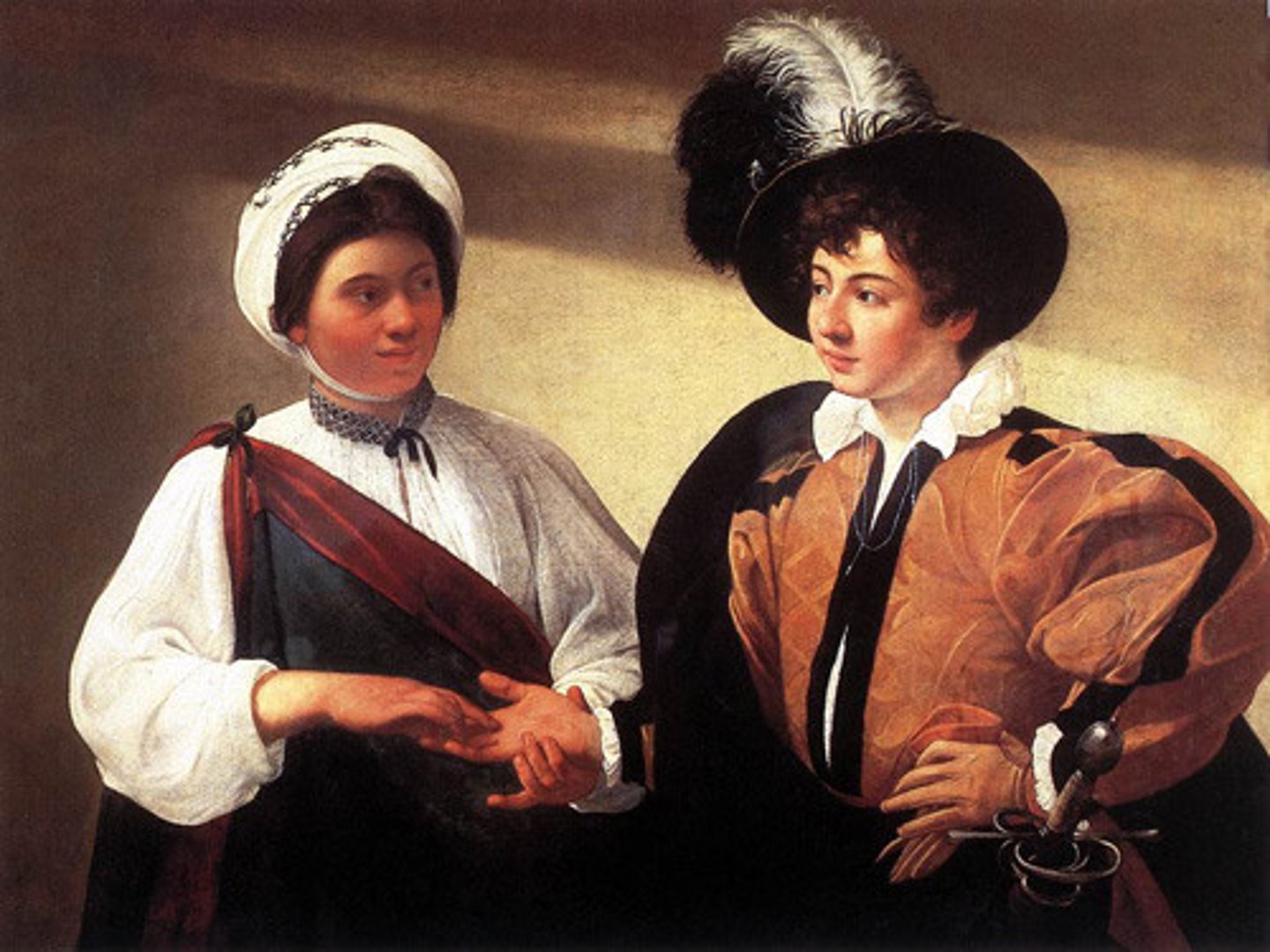
Georges de la Tour | The Fortune Teller (1630):
It is a genre scene, which means it depicts everyday life. The painting shows a group of people, including an old Roma woman reading a young man's fortune. While she is doing this, her companions are stealing from the young man. The painting is notable for its use of color and texture, as well as its detailed depiction of the figures' clothing. It is also interesting to note that the painting was discovered relatively recently, in the mid-20th century.
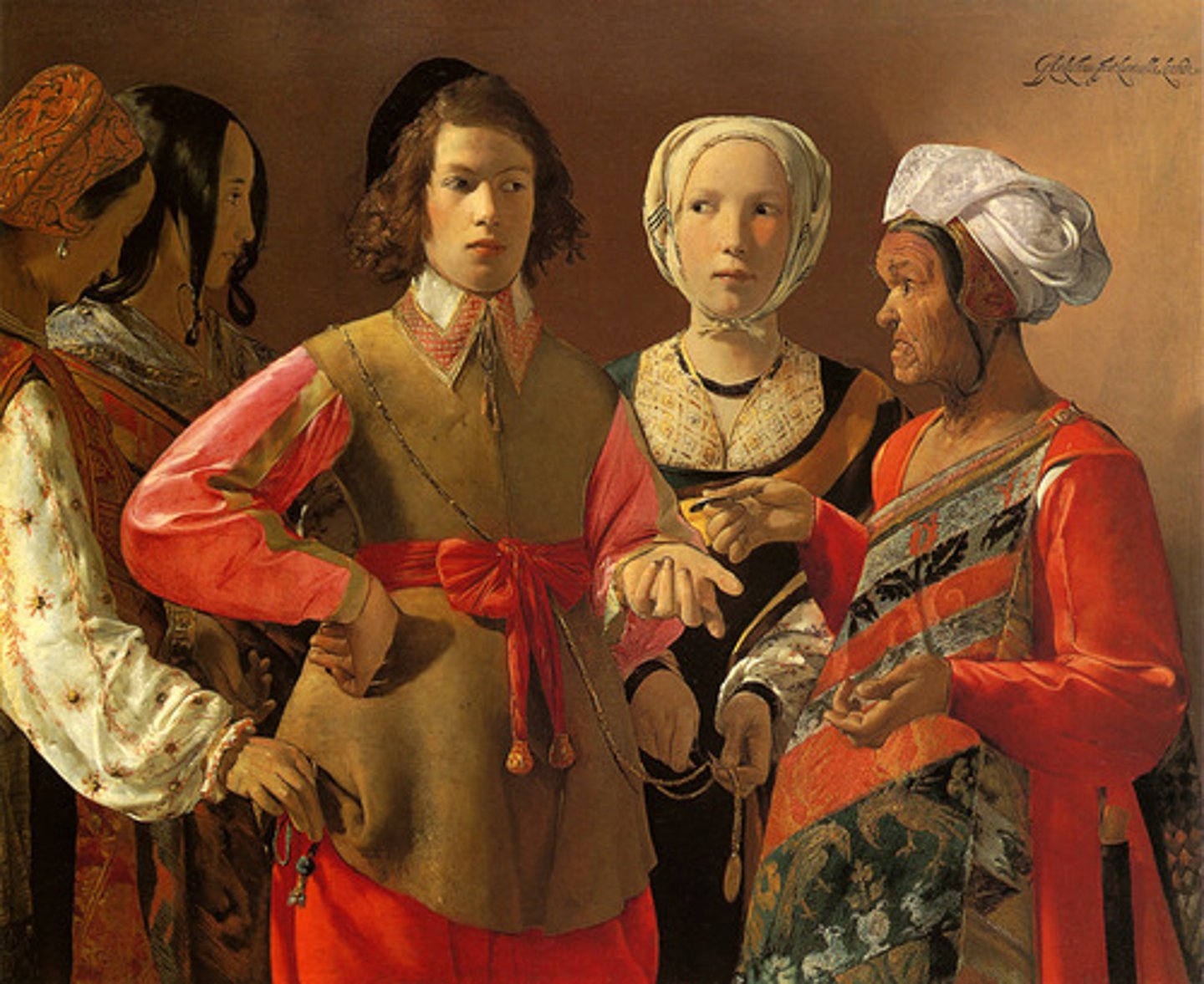
Michael Vrubel | The Fortune Teller (1895):
Her expression is a mystery. She looks wise, maybe a little mischievous, and definitely like she knows something we don't. The colors are really rich, deep blues and greens that make her skin glow. You can see all the details, like the patterns on her shawl.
What's cool about this painting is how it makes you wonder. What secrets does she hold? What does she see in the future? It's like Vrubel is saying, "Come closer, let me tell you your fortune..." even though it's just her there.
She kinda looks like she knows all of you secrets, your darkest fears; not only the ones in present time but the ones in your future. she looks worried for us, us being the person she's sterling at, the 4th wall.
Julio Romero de Torres | The Fortune Teller (1922)
At first glance, you see two women by a window, but there's more to it than meets the eye. The woman on the right, dressed in local attire, seems lost in thought, while the other rests on the sill, a hint of sadness in her posture.
The backdrop isn't just any view; it's the city of Cordoba, with its houses, the Fuenseca Christ Lantern, and the palace of the Marquis of Fuensanta del Valle. In the distance, a woman in a red shawl stands in a doorway, adding another layer to the story.
And if you look closely, there's yet another scene unfolding - a woman trying to hold onto a man. This scene, though small, connects to the main theme of the painting: love, or more specifically, heartbreak. It's like a puzzle, with each piece telling a part of the story. The painting's complexity might leave you wondering, what's it all about? Perhaps it's about the sadness of a young woman in love with a married man. Maybe the cards are telling her fortune, while in the background, the man's wife tries to keep him from leaving.
These women aren't just figures; they reflect the fashion of the time, from their silk stockings and mesh sweaters to their hairstyles. It's like Romero de Torres is capturing the essence of the women of Cordoba in his paintings.
Helena Sofia Schjerfbeck | The Fortune Teller (Woman in a Yellow Dress) (1926)
The painting features a woman in a yellow dress, her face turned away from the viewer, creating an air of intrigue. The fortune teller's identity remains ambiguous, as her features are obscured by the shadows and the angle of her head. This enigmatic quality adds to the painting's allure, prompting viewers to wonder about the fortune teller's secrets and the stories she holds within.
The woman's yellow dress is a striking focal point, its vibrant hue contrasting with the muted tones of the background. The dress's color and texture suggest a sense of elegance and refinement, hinting at the woman's social standing and the potential significance of her fortune.
The painting's composition is carefully balanced, with the woman's figure positioned centrally, drawing the viewer's attention to her posture.
The overall mood of the painting is one of quiet contemplation, inviting viewers to reflect on the mysteries of fate and the power of intuition.
Jose Luis Cuevas | Dreams of Rasputin (1968):
The painting is full of grotesque figures and symbols, which represent Rasputin's fears and anxieties. The painting is also a commentary on the political and social turmoil of the time.
The painting is characterized by its use of dark colors and distorted figures. The figures are often depicted with exaggerated features, such as large heads and small bodies. This distortion creates a sense of unease and unease.
Georges Bizet | "Trio des Cartes" (1875)
The "Trio des Cartes" is a famous piece from Georges Bizet's opera "Carmen." It's a fun and dramatic scene where three women, Frasquita, Mercédès, and Carmen, tell their fortunes using cards.
The music is lively and playful, reflecting the excitement of the moment. Each woman draws cards and interprets their meanings, revealing their hopes and fears about love and the future.
The scene is full of suspense as Carmen's cards foretell a tragic fate, contrasting with the more lighthearted fortunes of her friends. It's a beautiful example of how music can be used to tell a story and create drama.
Carl Orff | "O Fortuna" (1935)
"O Fortuna" is all about fate and the ups and downs of life. The lyrics talk about how fortune can be both kind and cruel, and how we're all at the mercy of chance. The music is intense and exciting, with a strong beat and soaring melodies. It's often used in movies and TV shows to create a sense of drama or suspense.
Benny Spellman | "Fortune Teller" (1962):
The song is about a guy who visits a fortune teller to find out about his love life. The fortune teller tells him that he's going to meet a special someone, but he has to be patient and wait for the right moment, "When the next sun arrives". Next day he returns, angry that nothing has happened, but falls in love with the fortune teller. They get married and are as "happy as we could be", and he gets his "fortune told for free".
Al Stewart | "Nostradamus" (1973):
The song is based on Nostradamus's prophecies, which are said to have predicted many major world events.
Nostradamus's supporters have retrospectively claimed that he predicted major world events, including the Great Fire of London, the French Revolution, the rises of Napoleon Bonaparte and Adolf Hitler, the atomic bombings of Hiroshima and Nagasaki, and the September 11 attacks.
Stewart weaves these prophecies into his lyrics, creating a fascinating and thought-provoking song.
The music is also very evocative, with a haunting melody and a driving rhythm. It's the kind of song that you can get lost in, and it's sure to leave you with a lot to think about.
Suzanne Vega | "Predictions" (1990):
is a song that carries an air of mystery, foreboding, and inevitability. Vega is known for her poetic and introspective lyrics, often exploring themes of identity, fate, and human nature. This song appears to delve into the idea of preordained events, where the future is not shaped by choices but is instead something already written, waiting to unfold.
One of the central themes in the song is the tension between fate and free will. The title itself suggests an exploration of destiny, raising the question of whether we have any control over our futures or if they are determined by forces beyond our understanding.
Another significant theme is the unsettling nature of premonitions and uncertainty. The song may reflect the anxiety of knowing or suspecting something before it happens, creating an eerie atmosphere.
The Barnum effect
is a psychological phenomenon where individuals believe that generic personality descriptions apply specifically to themselves. These descriptions are often vague and general enough to apply to a wide range of people, but individuals perceive them as highly accurate and tailored to their own unique personality.
This effect can provide a partial explanation for the widespread acceptance of some paranormal beliefs and practices, such as astrology, fortune telling, aura reading, and some types of personality tests.
The Pygmalion effect
is a psychological phenomenon in which high expectations lead to improved performance in a given area and low expectations lead to worse performance. According to the Pygmalion effect, the targets of the expectations internalize their positive labels, and those with positive labels succeed accordingly; a similar process works in the opposite direction in the case of low expectations.
Cold reading
is a set of techniques used by mentalists, psychics, fortune-tellers, and mediums. Without prior knowledge, a practiced cold-reader can quickly obtain a great deal of information by analyzing the person's body language, age, clothing or fashion, hairstyle, gender, sexual orientation, religion, ethnicity, level of education, manner of speech, place of origin, etc. during a line of questioning. Cold readings commonly employ high-probability guesses, quickly picking up on signals as to whether their guesses are in the right direction or not. The reader then emphasizes and reinforces any accurate connections while quickly moving on from missed guesses.

Confirmation bias
is the tendency to search for, interpret, favor, and recall information in a way that confirms or supports one's prior beliefs or values. People display this bias when they select information that supports their views, ignoring contrary information, or when they interpret ambiguous evidence as supporting their existing attitudes.
The effect is strongest for desired outcomes, for emotionally charged issues, and for deeply entrenched beliefs.
In social media, confirmation bias is amplified by the use of filter bubbles, or "algorithmic editing", which display to individuals only information they are likely to agree with, while excluding opposing views.
A self-fulfilling prophecy
is a prediction that comes true at least in part as a result of a person's belief or expectation that the prediction would come true. In the phenomena, people tend to act the way they have been expected to in order to make the expectations come true.
Self-fulfilling prophecies are an example of the more general phenomenon of positive feedback loops. A self-fulfilling prophecy can have either negative or positive outcomes.
Determinism
is the idea that everything that happens is caused by something else. Determinism suggests that even our choices are predetermined by a chain of causes stretching back who knows how far. Determinism focuses on particular events rather than the future as a concept. Some thinkers believe that because our choices are caused by something else, we don't have free will.
Some philosophers have maintained that the entire universe is a single determinate system, while others identify more limited determinate systems.
indeterminism
the view that events are not caused by anything, but rather occur due to random chance.
self-determination.
Self-determination is the idea that we can make our own choices based on our reasons, motives, and desires.
self determination אומר שאנחנו בעלי היכולת לבצע את ההחלטות שלנו ומה הסיבות להחלטות שלנו
Causal determinism
The view that all events are causally determined by prior events.
The more normal kind :)
Logical determinism
The view that the future is already contained in the present.
Theological determinism
The view that God has predetermined all events.
Physical determinism
The view that all events are determined by the laws of physics.
Biological determinism
The view that all events, behaviors, beliefs, and desires are determined by our genes because our genes seem to play a role in our behavior.
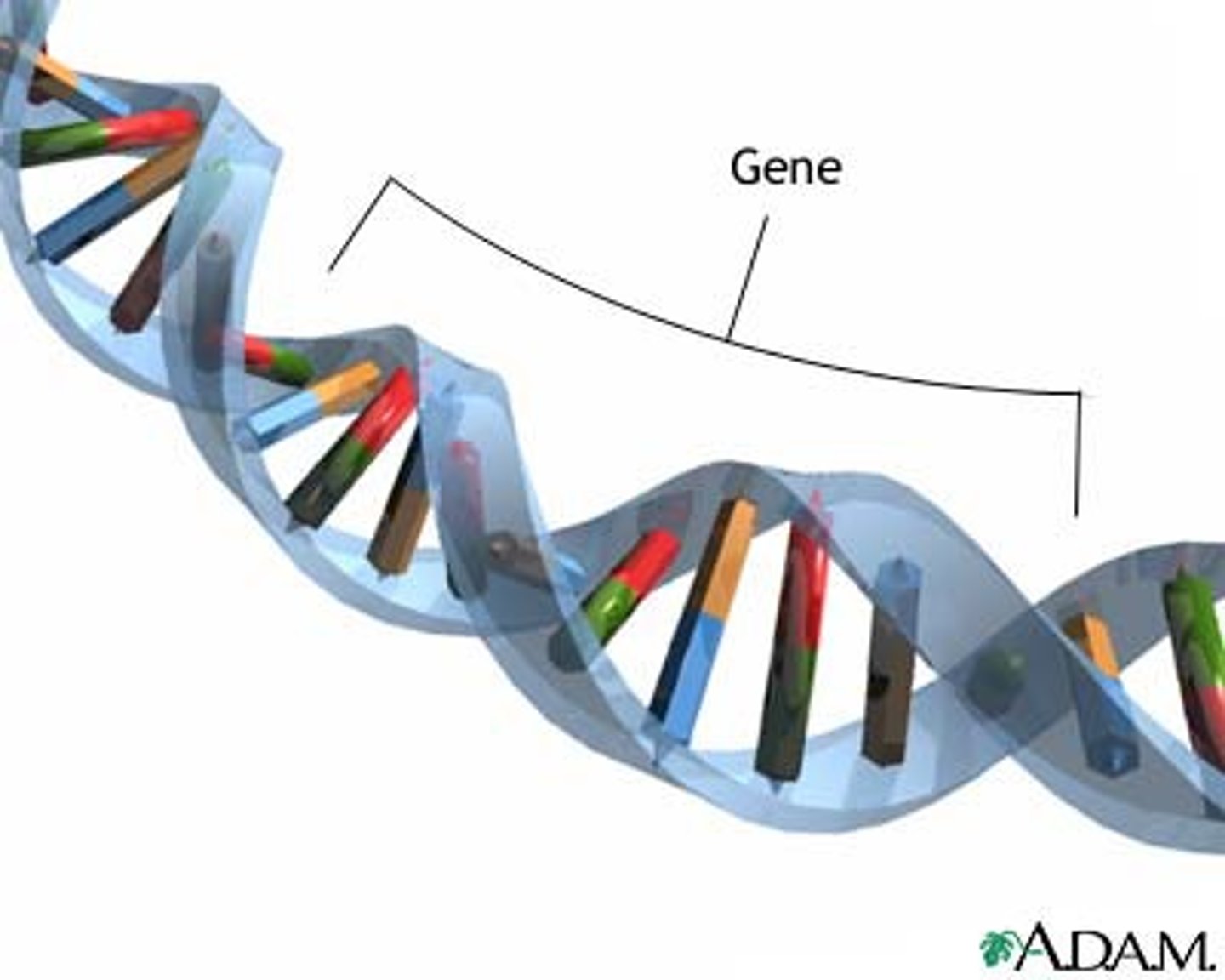
Environmental determinism
The view that all events are determined by our environment because of the fact that our environment seems to play a role in our behavior.
Free will
is the feeling that we're in charge of our own decisions. Like choosing what to eat for breakfast, or whether to study for a test. We feel like we could have chosen differently.
Hard Determinism
This is the belief that determinism is true, and therefore, free will is an illusion. They'd argue that our choices are just the inevitable result of past events, like those dominoes.
Libertarianism
we do have free will, and that determinism is false. They'd say that we're not just puppets of the past, and that we can truly make our own choices.
compatibilism (soft determinism)
argues that free will and determinism can coexist. They might say that even though our choices are influenced by the past, we can still be considered free if we're acting according to our desires and values.
Incompatibilism
This is the belief that free will and determinism cannot coexist. They argue that if determinism is true, then free will is impossible, and vice versa.
Ted Chiang | "What's expected of us" (2005):
The story examines the psychological consequences of proving that free will does not exist.
The Predictor, a small device that flashes one second before its button is pressed, serves as undeniable proof of determinism, the Predictor proves that free will is an illusion. No one can press the button without seeing the flash first, and no one can stop themselves from pressing it once the flash has occurred. At first, people treat it like a game, but over time, they realize that their choices are predetermined. This realization leads to a cognitive breakdown in many individuals, with some falling into akinetic mutism—a waking coma where they lose all motivation to act.
The narrator, speaking from the future through a time-delayed communication device, warns readers to pretend they have free will, arguing that belief in the illusion is essential for civilization. However, the final lines reinforce the deterministic paradox: the narrator, like everyone else, had no choice but to send this warning.
Chiang's story is a chilling exploration of determinism, self-deception, and the fragile nature of human motivation. The story is a warning about the dangers of knowledge. The author suggests that there are some things that humans are not meant to know. The knowledge that free will is an illusion is so destructive that it can cause people to lose their will to live—even if that illusion is ultimately false. The author's argument is based on the idea that free will and determinism are incompatible.